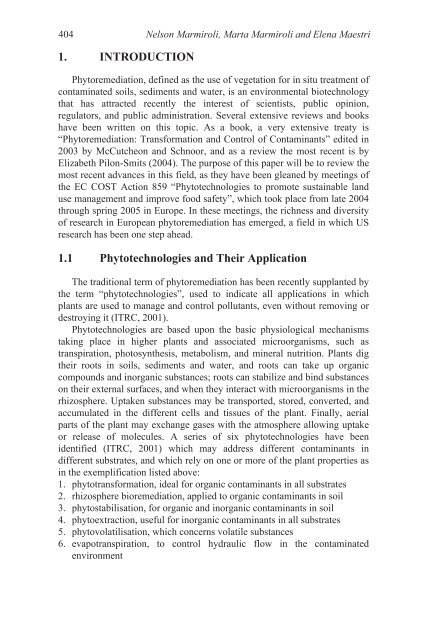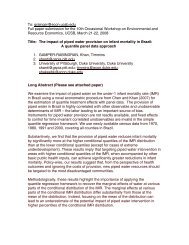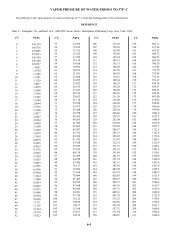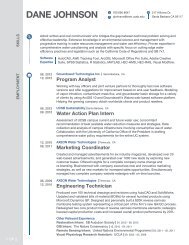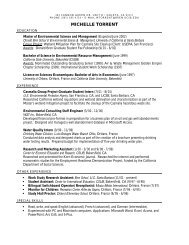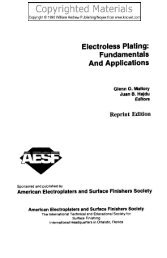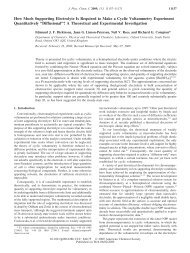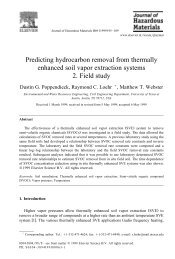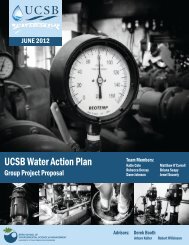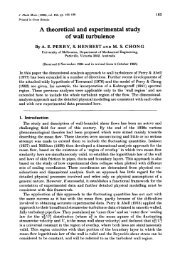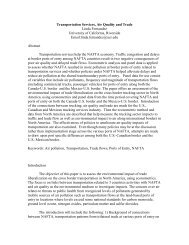PHYTOREMEDIATION AND PHYTOTECHNOLOGIES: A REVIEW ...
PHYTOREMEDIATION AND PHYTOTECHNOLOGIES: A REVIEW ...
PHYTOREMEDIATION AND PHYTOTECHNOLOGIES: A REVIEW ...
Create successful ePaper yourself
Turn your PDF publications into a flip-book with our unique Google optimized e-Paper software.
404 Nelson Marmiroli, Marta Marmiroli and Elena Maestri1. INTRODUCTIONPhytoremediation, defined as the use of vegetation for in situ treatment ofcontaminated soils, sediments and water, is an environmental biotechnologythat has attracted recently the interest of scientists, public opinion,regulators, and public administration. Several extensive reviews and bookshave been written on this topic. As a book, a very extensive treaty is“Phytoremediation: Transformation and Control of Contaminants” edited in2003 by McCutcheon and Schnoor, and as a review the most recent is byElizabeth Pilon-Smits (2004). The purpose of this paper will be to review themost recent advances in this field, as they have been gleaned by meetings ofthe EC COST Action 859 “Phytotechnologies to promote sustainable landuse management and improve food safety”, which took place from late 2004through spring 2005 in Europe. In these meetings, the richness and diversityof research in European phytoremediation has emerged, a field in which USresearch has been one step ahead.1.1 Phytotechnologies and Their ApplicationThe traditional term of phytoremediation has been recently supplanted bythe term “phytotechnologies”, used to indicate all applications in whichplants are used to manage and control pollutants, even without removing ordestroying it (ITRC, 2001).Phytotechnologies are based upon the basic physiological mechanismstaking place in higher plants and associated microorganisms, such astranspiration, photosynthesis, metabolism, and mineral nutrition. Plants digtheir roots in soils, sediments and water, and roots can take up organiccompounds and inorganic substances; roots can stabilize and bind substanceson their external surfaces, and when they interact with microorganisms in therhizosphere. Uptaken substances may be transported, stored, converted, andaccumulated in the different cells and tissues of the plant. Finally, aerialparts of the plant may exchange gases with the atmosphere allowing uptakeor release of molecules. A series of six phytotechnologies have beenidentified (ITRC, 2001) which may address different contaminants indifferent substrates, and which rely on one or more of the plant properties asin the exemplification listed above:1. phytotransformation, ideal for organic contaminants in all substrates2. rhizosphere bioremediation, applied to organic contaminants in soil3. phytostabilisation, for organic and inorganic contaminants in soil4. phytoextraction, useful for inorganic contaminants in all substrates5. phytovolatilisation, which concerns volatile substances6. evapotranspiration, to control hydraulic flow in the contaminatedenvironment


